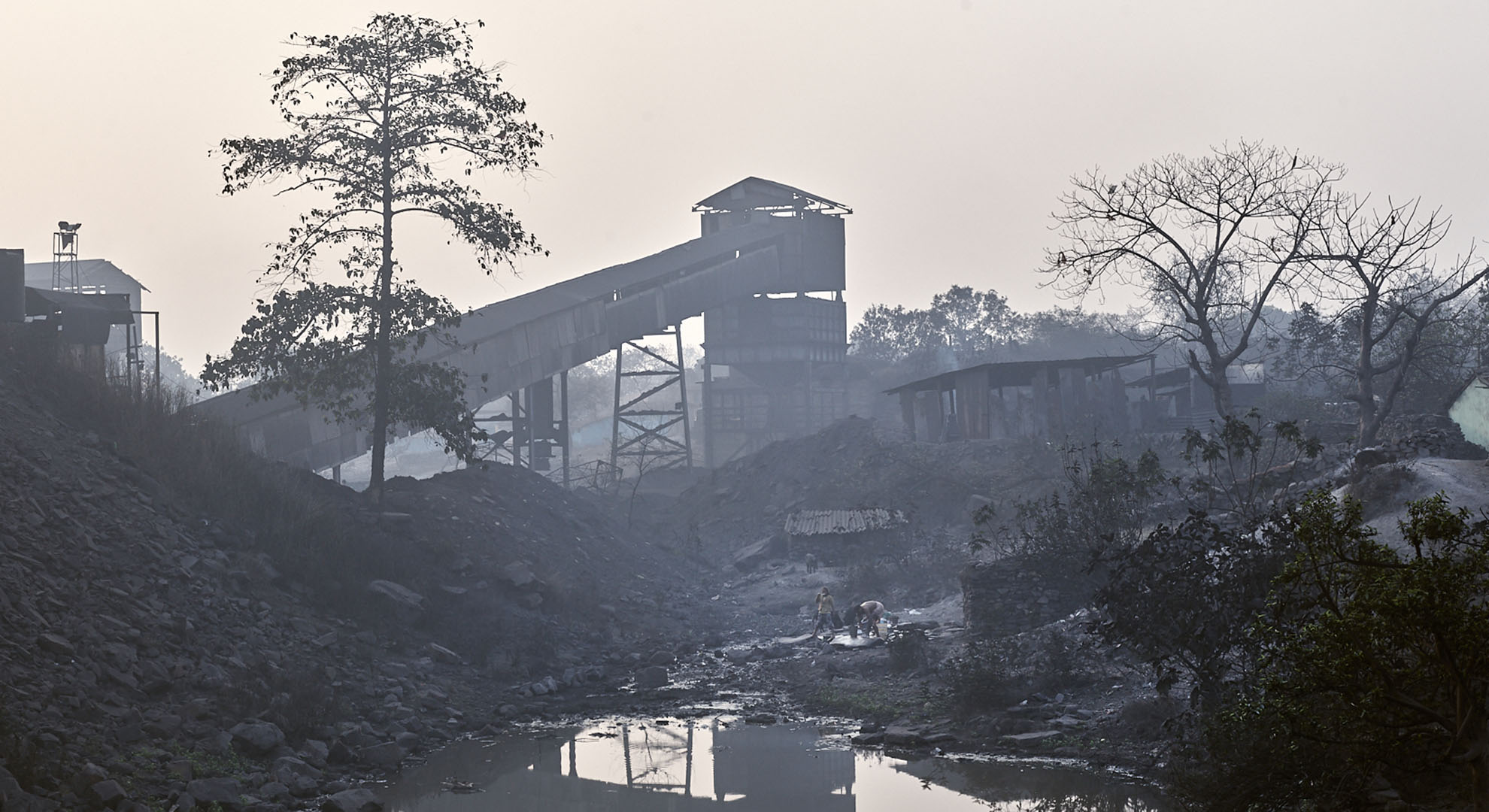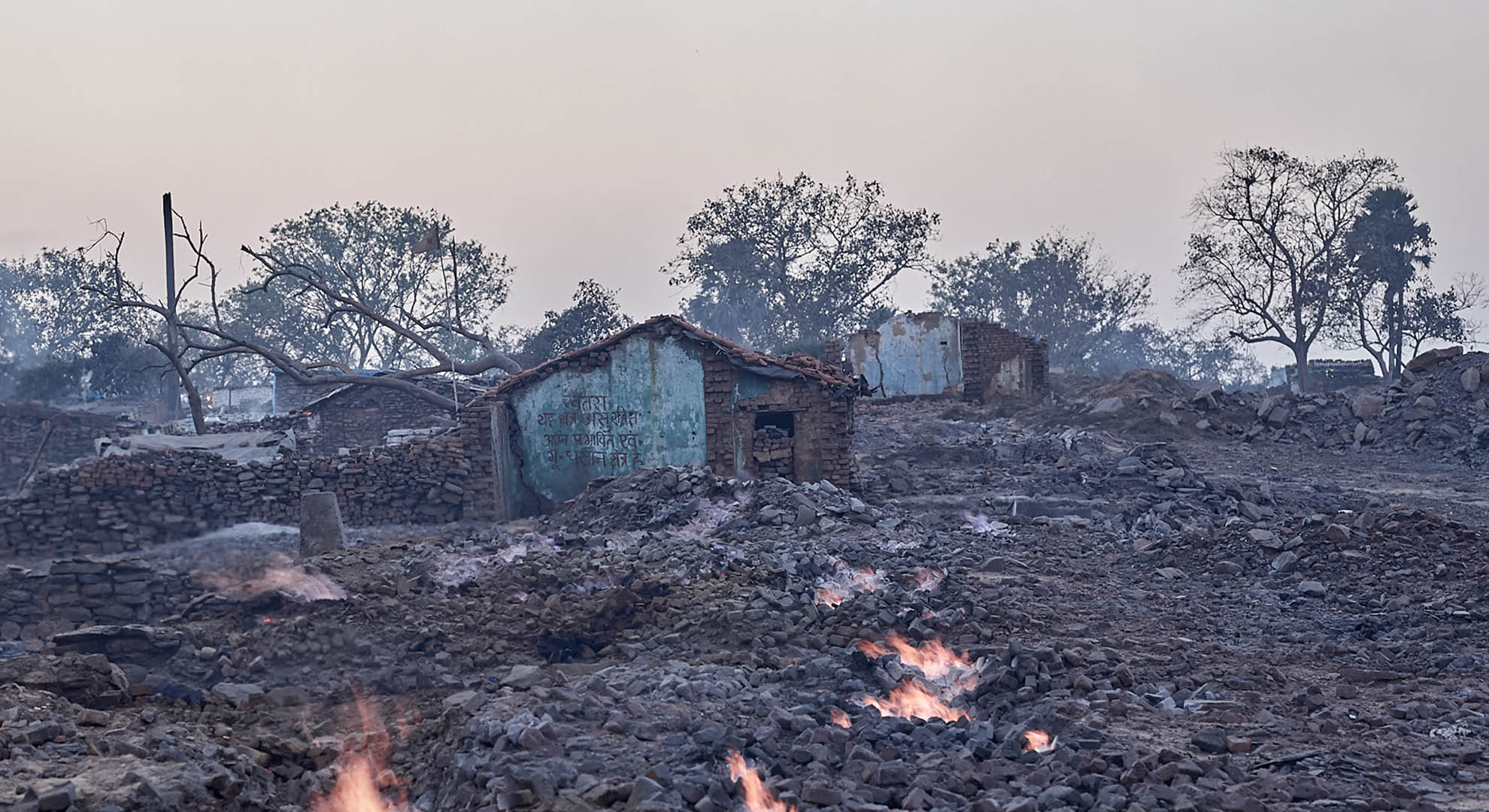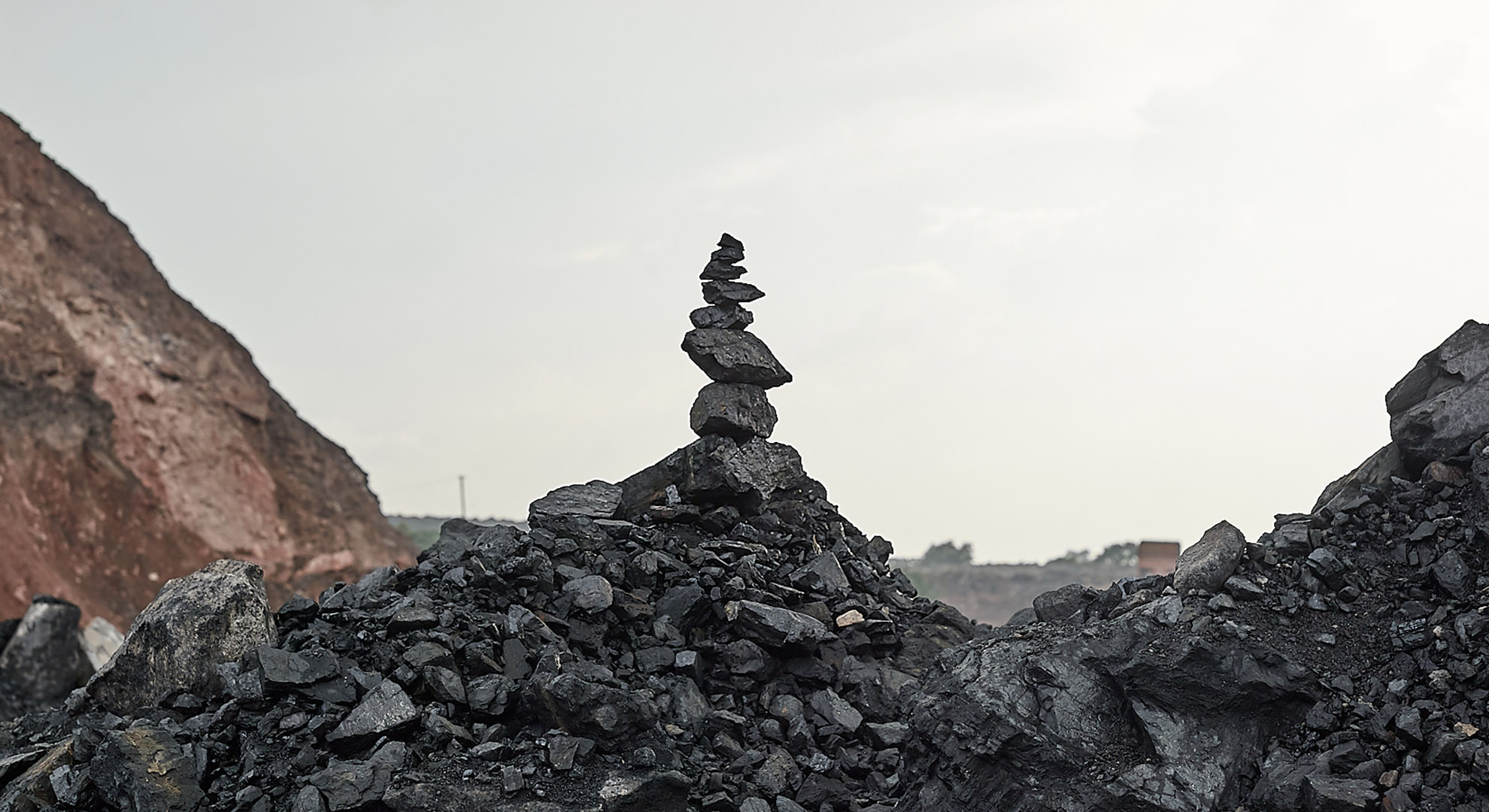Black Diamond
Photographer Sebastian Sardi explores the human and environmental cost of coal mining in India
The miner emerges from the thick air with a large pile of dense rock which neither glows nor radiates in the slightest. And yet he holds something precious – the Kala Heera, or Black Diamond.
In a small town in eastern India, large numbers of people spend their lives mining for coal. In a way, their stories began a while ago. The pursuance of this precious rock began in the late 1700s with the British duo of John Sumner and Suetonius Grant Heatly of the East India Company, along the Western bank of Damodar river. About 230 kilometres from this river lies the mineral-rich hills of Jharia, where our story continues, over 200 years later.
The monopoly over mining this mineral belonged to the British colonizers, who eventually gave up the industry to the Kutch Gurjar Kshatriyas – a minority Hindu community of artisans and construction workers who are considered to be the most backward class in India.

In 1894, Seth Khora Ramji Chawda, who was part of this community, became the first Indian to take control of mining the Jharia Coalfields after the British. Thus began the long and tedious history of coal mining in this region, one that continues to pierce the land in search of economic gains.
Coal, a seemingly inexhaustible source of fossil fuel, yields massive amounts of energy in India and around the world.
About 60 years ago, following India’s independence, the country’s annual coal production rose to 33 million metric tons under the National Coal Development Corporation (NCDC). Now, being the third-largest producer of coal in the world, India has produced 662.79 million metric tons between 2016-17; and the Jharia coalfields are responsible for a majority of this output. Coal India Limited (CIL) has grown to become the largest coal-producing company in the world, contributing over 80 percent of the mined coal in the country. Of CIL’s seven subsidiaries, Bharat Coking Coal Limited (BCCL) has the greatest share of coal mines in India, which are primarily operated in and around Jharia.
Over the years, coal production methods have been constantly questioned. The nationalization of coal mining began in the 1970s, stemming from a need to control the quality and monitor the effect of mining on local communities in the Jharia region. High-quality coal required greater resources and time, however, and costs were cut in order to increase quantity. This led to several mining disasters and practices that have had damaging, long-term effects on the people and their land.


COAL PRODUCTION IN INDIA BY SEBASTIAN SARDI
In February 2018, the Narendra Modi administration opened up commercial coal mining to Indian and foreign companies in the private sector. This marked the beginning of a new era in coal mining which may increase coal production in India and use advanced technology. However, it has also been reported that about 60 million people have been displaced from their homes, and more continue to lose their land and their source of income due to development projects. An estimated 40 percent of these people are Adivasi, a hugely marginalized group of communities around India.
In Jharia and other regions where coal mining is vigorous, the lands were once a sustainable source of agricultural income. Soil quality has long since been degraded due to the effects of coal mining, which have reached an alarming state: beyond the struggling vegetation, men, women and children also struggle, living for several generations with severe illness caused by the toxicity of coal mining processes and coal fires that have been burning continuously for the last hundred years.
Excerpt from the book Black Diamond by Sebastian Sardi. Written by Sukruti Anah Staneley
All images © Sebastian Sardi
